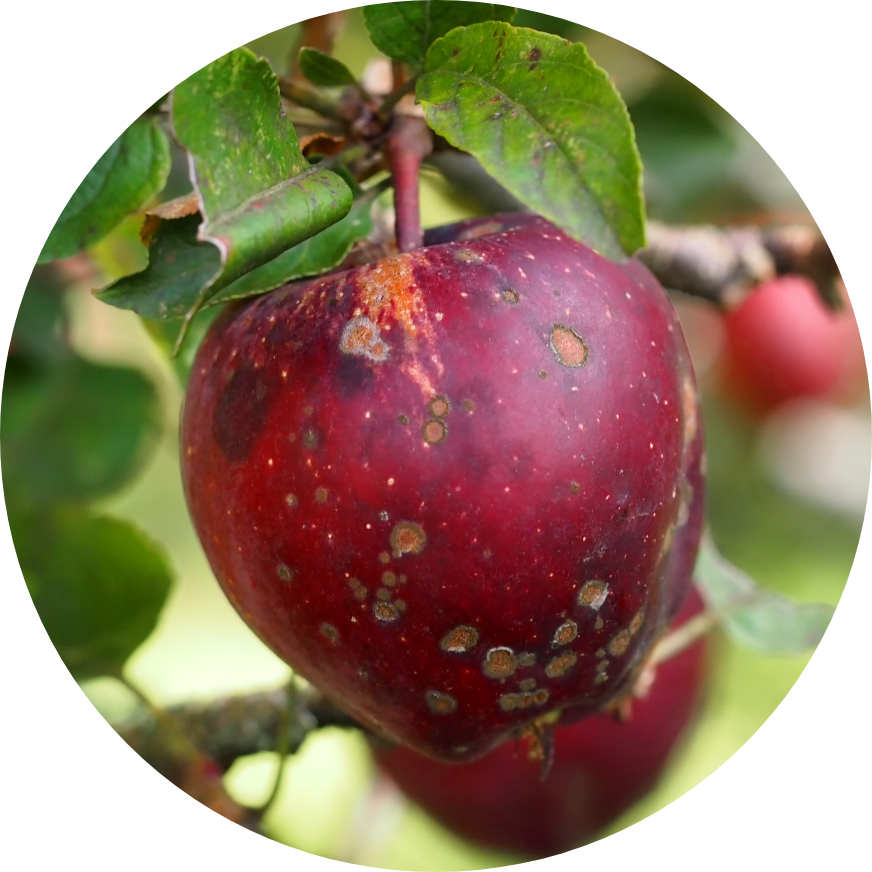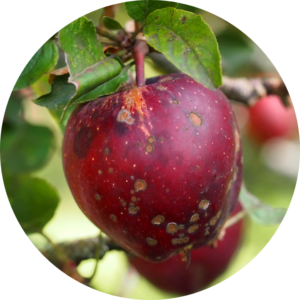Apple Scab

Apple scab is a common infection caused by the fungus “Venturia inaequalis,” which affects malus (or apple) trees. The disease can, in part, be identified by the development of brown lesions on the leaves and fruit of a specimen, which resemble scabs or warts. The most prevalent symptoms of the infection are fruit and leaf spots.
While apple scab usually does not kill or permanently damage the infected tree, it can have a negative impact on the quantity and quality of a specimen’s fruit yield; in addition, its presence can also weaken the tree over time, providing greater opportunities for more debilitating elements to establish a foothold. Apple scab tends to have the greatest impact during spring and the early part of summer, periods of high humidity and moderate temperature. The disease results from spores produced by fallen leaves from the previous year, so raking up and destroying these leaves can go a long way toward preventing further infection. Routine tree maintenance such as watering trees during periods of drought and fertilizing them every five years will result in healthier trees less prone to infection by apple scab.
Applying a fungicide at the same time the first leaves begin to emerge in the spring can also act as a preemptive measure. These treatments should be applied at 7-14 day intervals during the period when the first leaves begin to emerge. As fungicide is a preventative step, it’s futile to attempt to treat apple scab that manifests in the summer.

